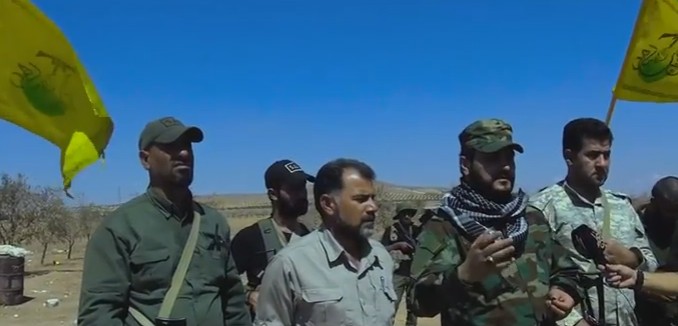Thousands of Iran-backed Shiite troops are massing in northern Syria for a battle to take the rebel-held eastern part of Aleppo, The Guardian reported Thursday.
Around 5,000 of the estimated 6,000 fighters come from countries outside Syria, such as Iran, Iraq, Pakistan, and Afghanistan. Most of the troops’ commanders are Shiites devoted to Iranian Supreme Leader Ayatollah Ali Khamenei.
One commander who recently arrived in Syria is Akram al-Kaabi of the Iraqi militia Keta’ib Hezbollah, one of the Iranian-backed Iraqi militias also known as popular mobilization forces (PMFs). “Why are you going to Syria? Because we are in the axis of resistance, and the axis of resistance has many battles all over the world,” he said to his troops last week in a speech that was posted to social media.
He also praised the fighters who traveled to Syria for being an “army of resistance” protecting the Shiite faith. “Youth like you are conducting jihad inside Iraq and outside Iraq, your path of jihad is blessed,” he said. al-Kaabi compared the opponents of the Bashar al-Assad regime to those who killed the Prophet Mohammed’s son-in-law in the battle of Karbala in the seventh century, one of the inciting factors of the Sunni-Shi’a split.
The presence of Shiite troops is often marked by the yellow and green flags, as well as posters commemorating fallen fighters from Iraqi militias and the Lebanese terrorist organization Hezbollah.
Sobhi Zeitun, an opposition fighter who fled from Aleppo to Turkey earlier this year, told The Guardian that the Shiite troops made their presence felt. “We could hear them on the radio for a long time,” he said. “They taunted and mocked. They said they were going to kill us in the name of Ali [the first Shiite caliph]. This is the face of Bashar, a man who hands over the country to sectarian groups, because he can’t defend it himself.”
Another resident who fled eastern Aleppo, Mohammed Sheikh, told The Guardian that the battle for Aleppo is being fought along sectarian lines, but complained that only Sunnis are being labeled as sectarian: “There are hardline people among us [the opposition]. We admit that and we are scared of them. But you should all be scared about what comes next. You should all face what is happening. If this continues to be about one sect fighting the other, this will be a war that will destroy civilisation.”
Earlier this month, Iranian Islamic Revolutionary Guard Corps Maj. Gen. Yahya Rahim Safavi boasted that Iranian-backed ground troops were giving the Russians intelligence to be used in targeting airstrikes. Russian planes have dropped 1,700 bombs on eastern Aleppo this week, destroying two hospitals. Forty Aleppo hospitals and clinics have been destroyed since Russia joined the fighting last year.
Researcher Gabriel Glickman described al-Kaabi’s ties to Iran in a June article in The Tower.
One commander of a unit that makes up [PMFs], Akram al-Kaabi, has even reportedly claimed that he would overthrow Iraq’s government if ordered to do so by Tehran—thus signifying that his true allegiance lies with the Supreme Leader of Iran and not with the Iraqi head of state. What is more, one of the most prominent and active commanders within [the PMFs] is Abu Mahdi al-Muhandis (AKA Jamal Jaafar Muhammed Ali), a well-known terrorist who was designated by the U.S. Treasury in 2009 as an “individual posing threat to stability in Iraq.” In fact, Muhandis, who has Iranian citizenship, is known to be a close adviser to the head of Iran’s Islamic Revolutionary Guards Corps-Quds Force, Qassem Soleimani.
[Photo: FSA Platform / YouTube ]




